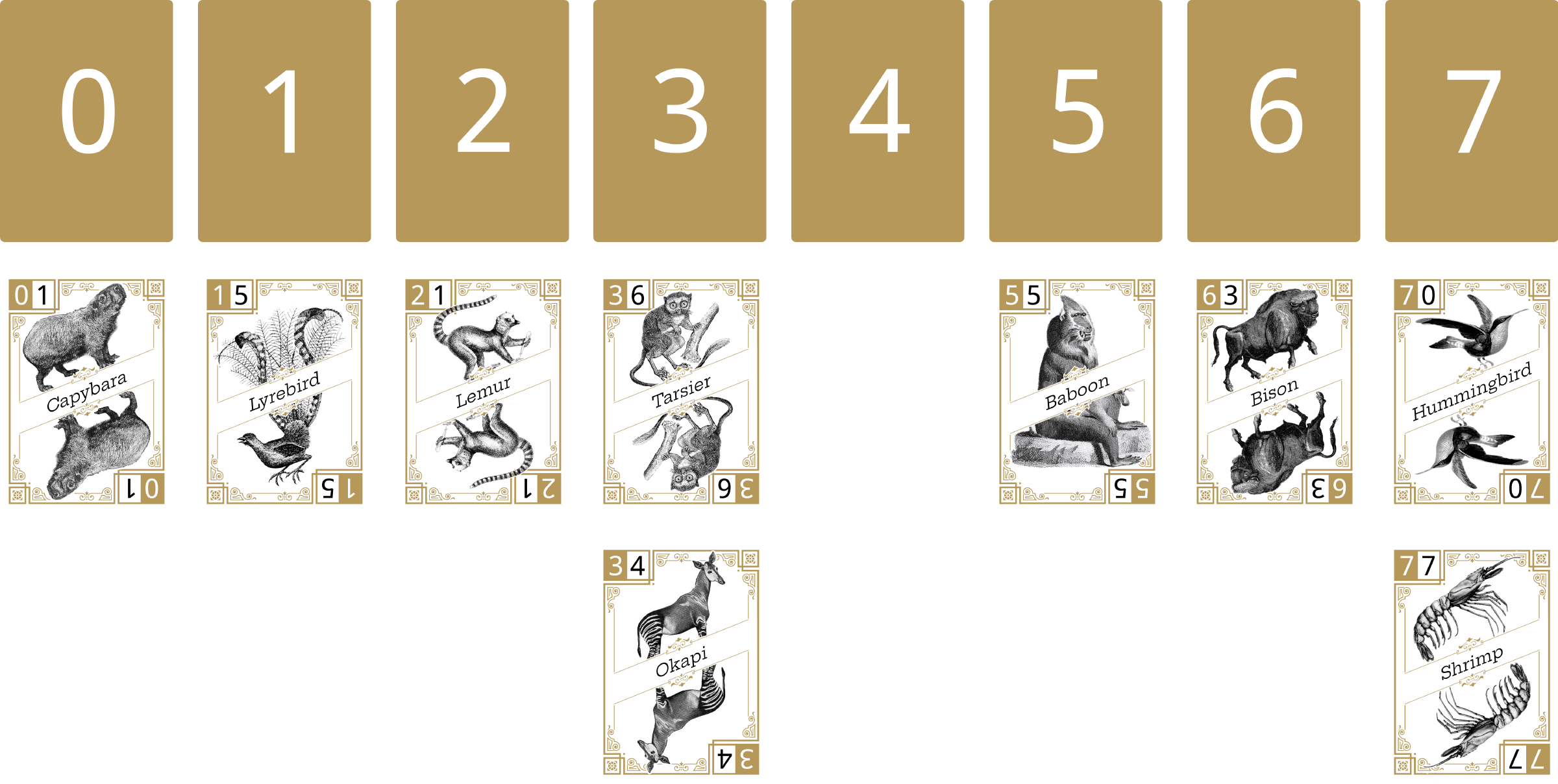Separate Chaining Insertion
Goals
Students will understand elements of the insertion algorithm for separate chaining in hash tables.
Video
Materials
One deck of Menagerie cards.
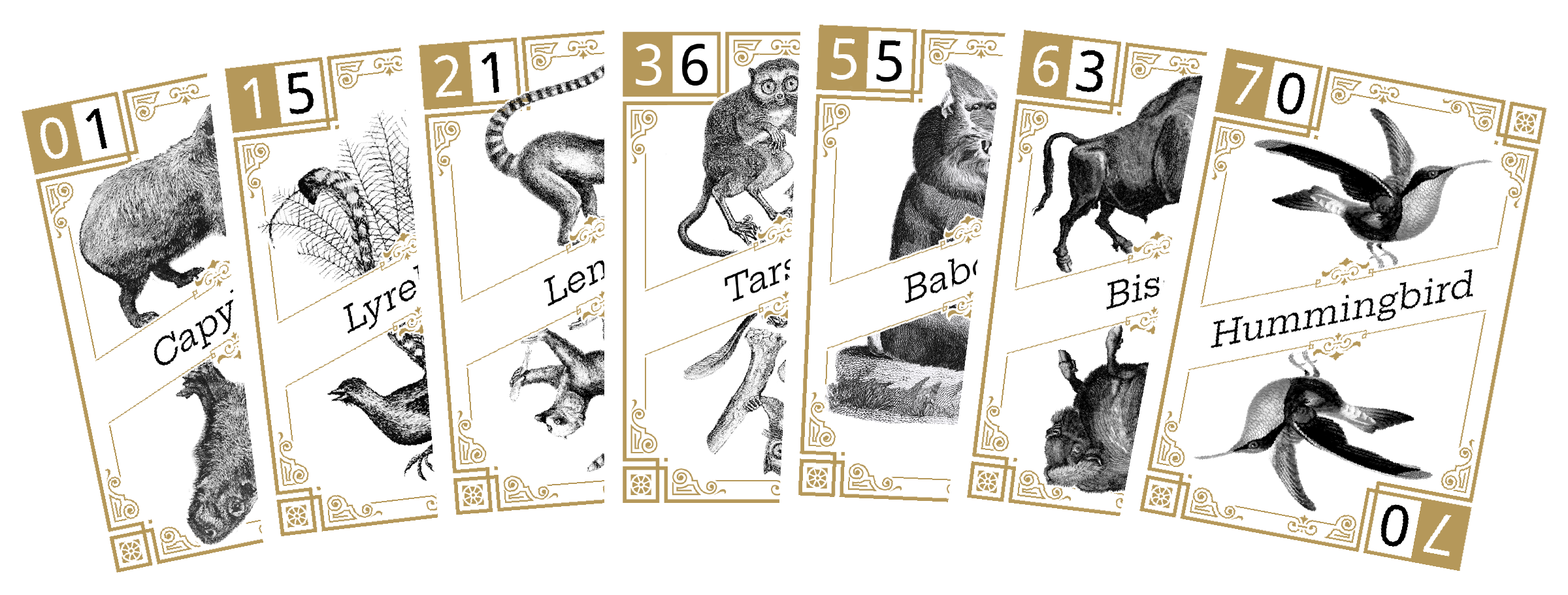
Setup
Give each student a set of 0-7 number cards. Set these cards in a row, ordered from 0 on the left to 7 on the right.

Shuffle the animal cards from the deck and deal each student 9 cards.
Each student will shuffle their 9 cards, and place them in a face-down pile to their left.
Algorithm
Repeat these steps for each card in the face-down pile.
Flip over a card from your face-down pile, to become the face-up card. To determine where the face-up card should be placed, look at the first number in gold background. This number is the result of passing the animal name through the Murmur3 hash function, and calculating this number modulo 8.
Now find the matching number card in the row. If the space below this number card is empty, then place the face-up card in this space below. However, if there are other cards, place the face-up card directly below all of the other cards.
Example
The first card flipped face-up is the Capybara. This card hashes to 0, so it is placed under the 0 number card.

The next card flipped face-up is the Tarsier. This card hashes to 3, so it is placed under the 3 number card.

The next card flipped face-up is the Baboon. This card hashes to 5, so it is placed under the 5 number card.

The next card flipped face-up is the Okapi. This card also hashes to 3, so it is placed under the Tarsier card.
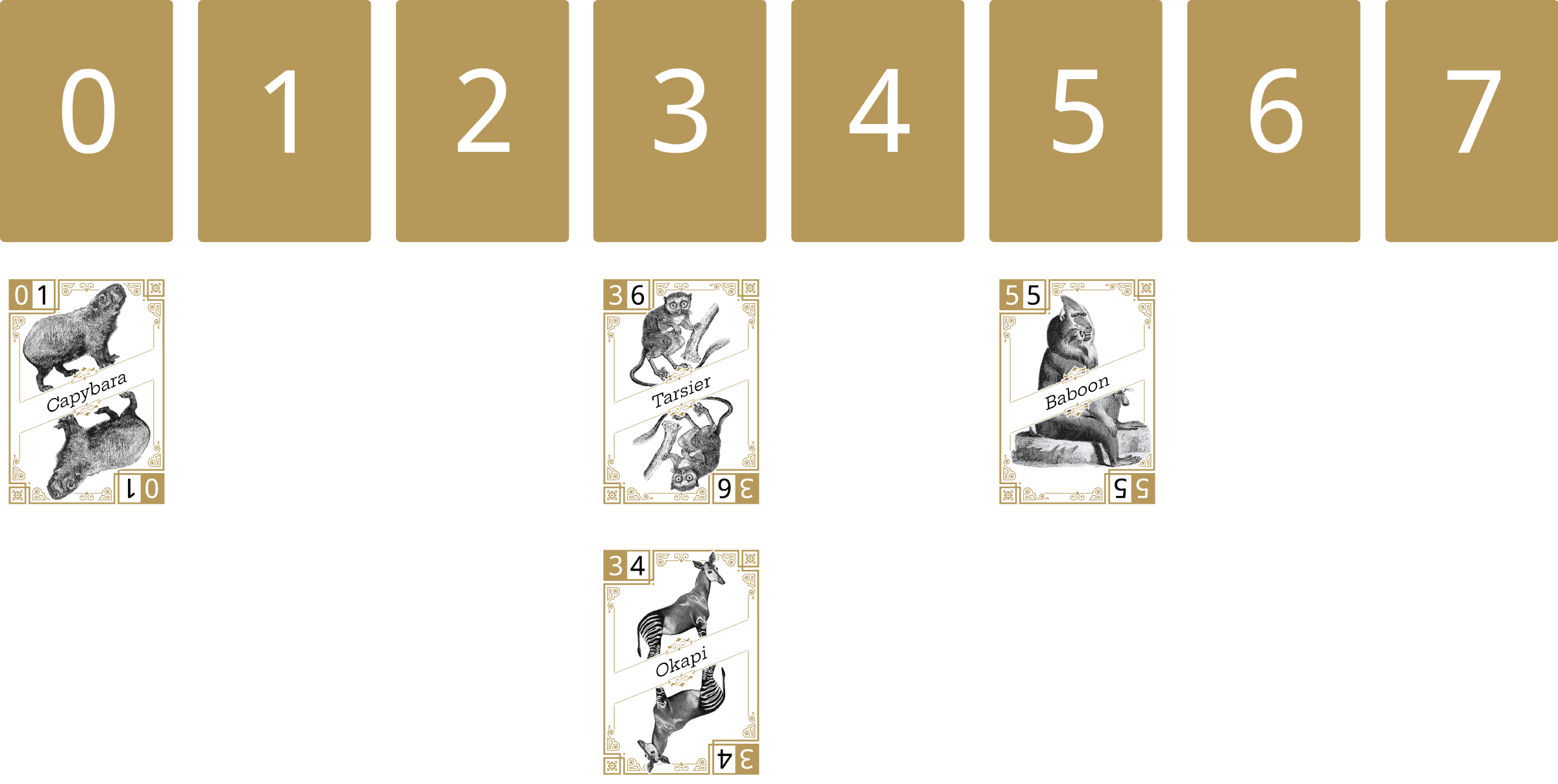
The next card flipped face-up is the Hummingbird. This card hashes to 7, so it is placed under the 7 number card.

The next card flipped face-up is the Lyrebird. This card hashes to 1, so it is placed under the 1 number card.

The next card flipped face-up is the Shrimp. This card hashes to 7, so it is placed under the Hummingbird card.
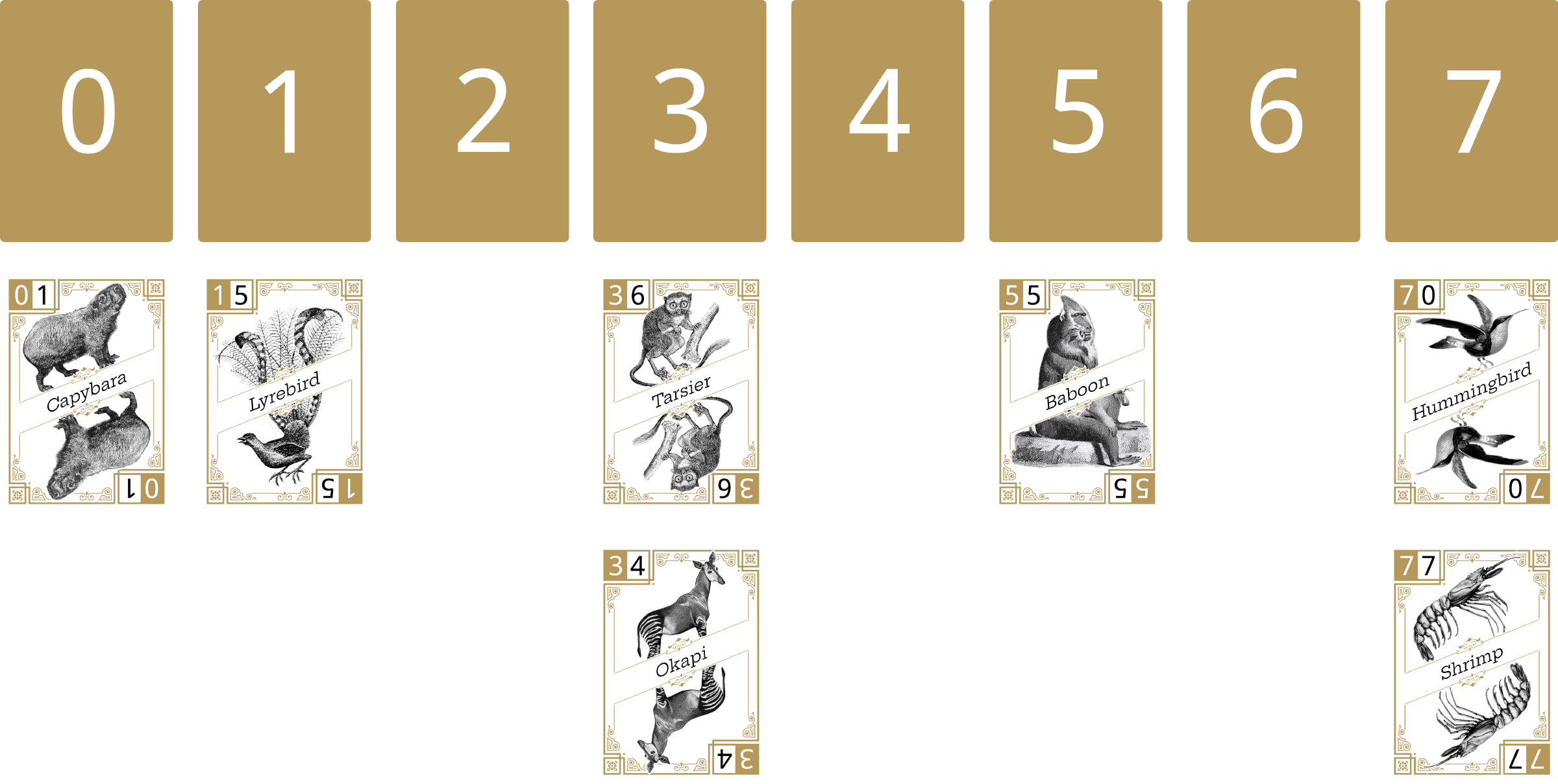
The next card flipped face-up is the Lemur. This card hashes to 2, so it is placed under the 2 number card.
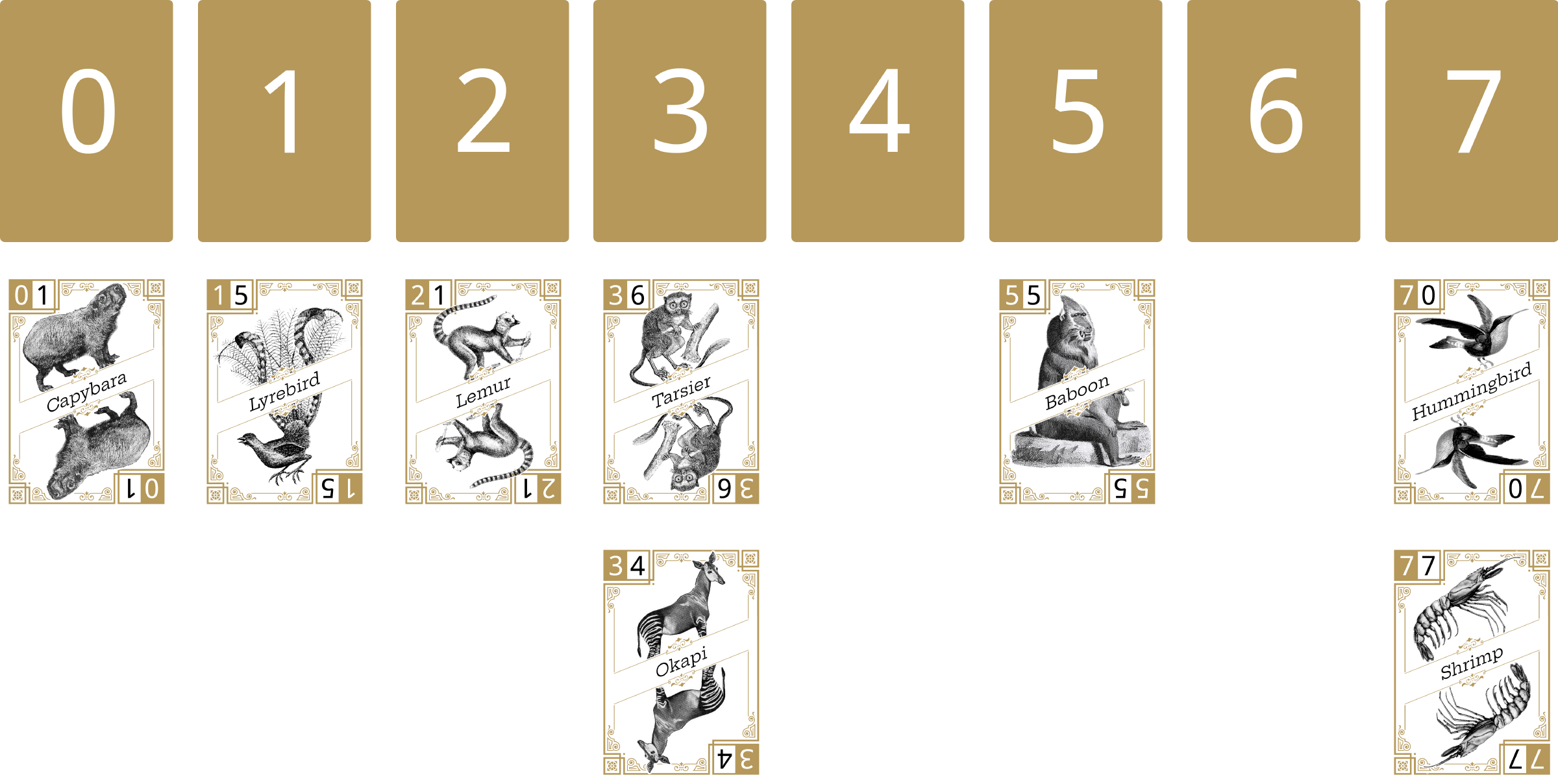
The last card flipped face-up is the Bison. This card hashes to 6, so it is placed under the 6 number card.
